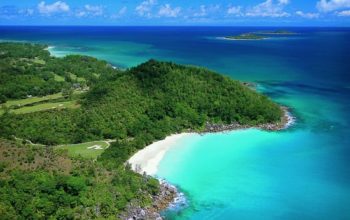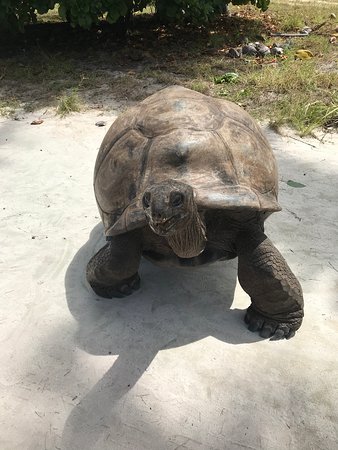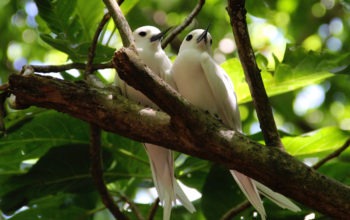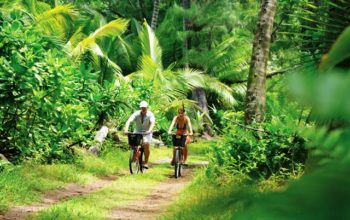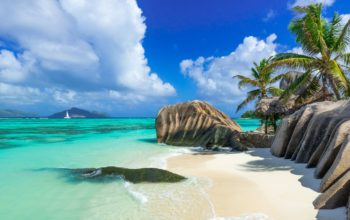Seychelles
Seychelles is an archipelago comprising of 115 islands occupying an area of 455 km². It is a legendary beauty scattered across the Indian Ocean between four and ten degrees south of the equator. The Seychelles Inner Islands group consists of 41 of the oldest mid-oceanic granitic islands and 2 coralline islands. However, the Outer Islands group is only low-lying coral atolls and reef islands and is 72 in numbers.
The granitic islands of the Seychelles archipelago cluster around the main island of Mahé. Mahe is home to the Seychelles International Airport, the commercial Port and the capital Victoria. Mahe’s satellites islands are Praslin and La Digue. The coralline Outer Islands are divided into five groups. The Amirantes group is 230km from Mahé. The Southern Coral Groups of Alphonse, Farquhar and the Aldabra Group, are about 1150km from Mahé.
Climate
Seychelles enviable climate is always warm and without extremes. In this tropical haven the temperature seldom drops below 24°C or rises above 32°C. All but the remotest southern islands lie comfortably outside the cyclone belt. This makes Seychelles a truly wonderful year round destination for sun worshipers and beach lovers.
During the north-west trade winds between October and March, the sea is generally calm. The weather is warm and humid, with average winds of 8-12 knots.
In January and February the islands receive their life-giving rains. This rejuvenates the rivers and streams and teases the vibrant foliage into rainbows of color.
The months between May and September bring drier, cooler weather, and livelier seas with winds of 10-20 knots.
Inner Islands
The Inner Islands which are mostly granitic, cluster mainly around the principal islands of Mahé, Praslin and La Digue, forming the cultural and economic hub of Seychelles as well as the centre of its tourism industry. Together they are home to the majority of Seychelles’ accommodation facilities as well as the archipelagoes’ entire population.
Outer Islands
The Outer Islands are those situated beyond the Seychelles plateau. They comprise of 72 low-lying sand cays and atolls lying anywhere between 230km and 1150km from Mahé. They are less visited than their granitic cousins due to their relative remoteness. These pristine miniature worlds, little more than sand spits or rocky outcrops, offer untouched habitats for many species of wildlife.
Only two islands among the Outer Island groups, namely Alphonse and Desroches currently offer accommodation facilities. They boast of luxuriously lodges with unparalleled opportunities for sailing, fishing and diving in places where few have gone before.
History
Seychelles is a comparatively young nation. It can trace its first settlement History of Seychelles back to 1770. This was when the islands were first settled by the French, leading a small party of whites, Indians and Africans. The islands remained in French hands until the defeat of Napoleon at Waterloo. The population evolved to 3,500 by the time Seychelles was ceded to Britain under the treaty of Paris in 1814.
During this period Seychelles came to know the enlightened policies of administrators such as Pierre Poivre. Also the brilliant politicking of Governor Queau de Quinssy and, of course, the terrible repercussions of the French Revolution.
Under the British, Seychelles achieved a population of some 7,000 by the year 1825. Important estates were established during this time producing coconut, food crops, cotton and sugar cane. During this period Seychelles also saw the establishment of Victoria as her capital, the exile of numerous and colorful troublemakers from the Empire, the devastation caused by the famous Avalanche of 1862 and the economic repercussions of the abolition of slavery.
Seychelles achieved independence from Britain in 1976 and became a republic within the commonwealth. On the 4th December 1991, following a period of single party rule by the government of Mr. France Albert René, he announced the return of a multiparty system of government. In 1993, the first multiparty presidential and legislative elections were held under a new constitution in which President René was victorious. President René also won the 1998 and 2003 elections before transferring the Presidency to James Alix Michel in June 2004.
Languages
There are three official languages in Seychelles: Creole (a lilting, French-based patois), English and French. Some Seychellois also speak fluent Italian and German.
Entry Formalities
NO VISA is required for any national wishing to visit Seychelles. However, on arrival these documents below must be shown in order to obtain free Visitor Permit by Immigration Authorities :
![]() A passport valid on the date of entry to and exit from Seychelles.
A passport valid on the date of entry to and exit from Seychelles.
![]()
![]()
![]()
![]()
![]()
![]()
![]()
![]()
![]()
![]()
![]()
![]()
![]()
![]()
![]()
The Visitor’s Permit is initially valid for the period of up to one month. This can be extended for a further period of up to three months.
Health Regulations
There is NO risk of contracting malaria, yellow fever, cholera or other common tropical diseases in Seychelles.
Yellow fever vaccination is required for travelers over 1 year of age. Only for those who have come from or transit through an infected area within the preceding 6 days.
Infected areas include certain parts of northern and central South America and Central Africa. (South Africa is not considered as an infected area.)
Persons who transited via Nairobi, Kenya airport do not require a vaccination against yellow fever.
Money & Banking
The local currency is the Seychelles Rupee (SCR) which is divided into 100 cents. Coins come in 5, 10, 25 cents, and 1, 5 and 10 Rupee denominations. Notes come in 25, 50, 100 and 500 Rupee denominations.
Exchange rates are featured on the Central Bank of Seychelles website and are available at all banks.
Banking hours are generally Monday-Friday 0830hrs-1400hrs, and Saturday 0830hrs-1100hrs. All banks process foreign exchange transactions. Passports are required for visitors’ transactions and nominal commissions may be charged.
Visitors can pay for Hotel Bills, Excursions and other services in local currency. Major Credit Cards and international currency notes (mainly USD and Euro) are accepted.
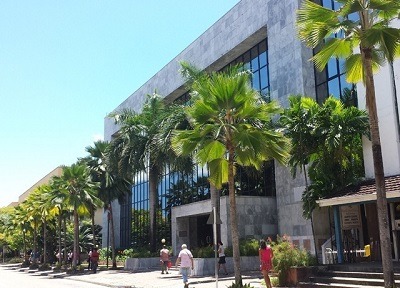

Exchanging foreign currency into Seychelles Rupees can be done at banks, authorized money dealers or with the hotel cashiers.
Credit cards are widely accepted throughout Seychelles. If you require Rupees, you can exchange what you want when you want.
Re-exchanging back Seychelles Rupees into foreign currency can be very easily done. Any bank or authorized dealer anywhere on the islands including also at the Seychelles International airport can assist.
Personal Safety
Seychelles enjoys a low level of crime. Nevertheless, it is still advisable to take some routine precautions to ensure your personal safety and that of your possessions.
Walking alone on isolated beaches, swimming alone or leaving yachts unlocked at their moorings is not advisable. It is also not recommended to carry large sums of money or valuables on your person. Most Hotels offer room safes to secure valuables and visitors are advised to take advantage of this service.
What To Pack
Light clothing suitable for Seychelles’ warm tropical climate is recommended. Visitors should prepare themselves for the relatively hot, humid atmosphere and plenty of sun.
Bring hats, sunglasses and adequate UV protection – SPF30+ is advisable. Do remember that even on an cloudy day the tropical sun is still strong and able to cause unpleasant sunburn. Wearing a t-shirt for the first swim or snorkel is a good idea.
A camera is an absolute must! Do bring along extra memory cards for you memorable pictures and videos together with spare batteries.
Casual evening wear (long trousers for men), together with appropriate footwear, is necessary for dining out. Casinos and some hotels do have a dress code in the evening.
Sturdy walking shoes are recommended if you intend to take guided walk and trail excursions.
Visitors suffering from a specific medical conditions should be sure to hand carry an adequate stock of the appropriate medication. Also bring along any preferred brand of sun cream, mosquito repellent etc.



